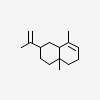Purple Coneflower (Echinacea purpurea)
The Purple Coneflower is a perennial plant that is found in both the Tall Grass Prairie and the Eastern Deciduous Forest. It grows in open fields/prairies and the open woods as well. It can cure different maladies including snakebite, sore throat, and toothaches. The dried roots and flowers were used as topical remedies to cure snake bites and burns. A tea is made to cure toothaches. The active chemical ingredient in the Coneflower is rutin. The chemical formula for rutin is C27H30O16.
http://www.herbs2000.com/herbs/herbs_echinacea.htm
English Plantain
Plantago Lanceolata
The English Plantain is found in both the Eastern Deciduous Forest and the Tall Grass Prairie. It is a highly valued herd due to its medicinal properties. The roots can be used to heal snakebites. A decoction of dried leaves promotes blood clotting. Leaves made into a poultice can stop bleeding, heal sores, blisters, and reduce swelling. After being bitten by any bug you can rub fresh plantain leaves around the affected area to reduce swelling and the irritation to itch. A tea made from the leaves can help with diarrhea. The main chemical compound in the Plantain is aucubin. It's chemical formula is C15H22O9.
http://medicinalherbinfo.org/herbs/Plantain.html
http://www.chemspider.com/Chemical-Structure.82585.html?rid=b247a133-49b5-4002-9501-92d692b3b20f
Common Juniper
(Juniperus communis)
The common juniper is found in the the Eastern Deciduous Forest and the Tall Grass Prairie. It is usually found in fields and rocky areas with well drained soil. Can be found at the edge of the woods. It has many medicinal benefits thus being a valuable plant to be able to properly identify. It has small berries all over it that are responsible for most of the healing. They can heal snake bites by creating an oil from the fruits and topically applying. You can also apply this to wounds as a disinfectant. Beware the fruits for they are toxic in frequently high doses. Juniper's active chemical ingredient is alpha selinene. The chemical formula for it is C15H24.
 alpha-selinene
alpha-selinene http://www.bio.brandeis.edu/fieldbio/medicinal_plants/pages/Common_Juniper.html
http://www.naturalmedicinalherbs.net/herbs/j/juniperus-communis=juniper.php
http://www.chemindustry.com/chemicals/0300809.html
Black-eyed Susan
(Rudbeckia hirta)
The Black-eyed Susan is found only on the prairie but you may be able to spot it in clearings in the woods or at the edge of tree lines. The black eyed susan is a small flower but has great medicinal properties. It can alleviate cold/flu symptoms from a tea from the leaves and roots, so it is good for malaria. It can treat snakebites with a wash made from the roots. A leaf poultice can be concocted to heal snakebites as well. The final healing property is a root wash to reduce swelling and to heal minor cuts, scrapes, and sores. The active chemical ingredient in the black eyed susan is pulchelin. It's chemical formula is C15H22O4.
 Pulchelin
Pulchelin Black-Eyed Susan
Black-Eyed Susan
http://www.bio.brandeis.edu/fieldbio/medicinal_plants/pages/Black_Eyed_Susan.htm
http://www.herbal-supplement-resource.com/black-eyed-susan.html
http://www.chemspider.com/Search.aspx?q=pulchelin
White Willow
(salix alba)
The White willow is found in the Eastern Deciduous Forest and the Tall Grass Prairie.
It prefers temperate areas with direct sunlight and plenty of moisture. The active chemical ingredient in the bark of the willow tree is salicin. To ingest this chemical, you can make a tea from the bark or just directly suck/chew on the bark. By taking salicin, you can reduce pain stimuli and inflammation.The branches are malleable and lengthy so they make excellent cordage. You can construct a temporary splint with some sturdy sticks and the branches from the willow. This can cure any malady that has pain/swelling symptoms. The chemical formula of salicin is C13H18O7.
 Salicin
Salicin willow tree
willow tree
http://www.webmd.com/vitamins-supplements/ingredientmono-955-willow%20bark.aspx?activeingredientid=955&activeingredientname=willow%20bark
http://www.naturalmedicinefacts.info/plant/salix-alba.html
http://www.mdidea.com/products/phytochemical/salicin01.html
(Rudbeckia hirta)
The Black-eyed Susan is found only on the prairie but you may be able to spot it in clearings in the woods or at the edge of tree lines. The black eyed susan is a small flower but has great medicinal properties. It can alleviate cold/flu symptoms from a tea from the leaves and roots, so it is good for malaria. It can treat snakebites with a wash made from the roots. A leaf poultice can be concocted to heal snakebites as well. The final healing property is a root wash to reduce swelling and to heal minor cuts, scrapes, and sores. The active chemical ingredient in the black eyed susan is pulchelin. It's chemical formula is C15H22O4.
http://www.bio.brandeis.edu/fieldbio/medicinal_plants/pages/Black_Eyed_Susan.htm
http://www.herbal-supplement-resource.com/black-eyed-susan.html
http://www.chemspider.com/Search.aspx?q=pulchelin
White Willow
(salix alba)
The White willow is found in the Eastern Deciduous Forest and the Tall Grass Prairie.
It prefers temperate areas with direct sunlight and plenty of moisture. The active chemical ingredient in the bark of the willow tree is salicin. To ingest this chemical, you can make a tea from the bark or just directly suck/chew on the bark. By taking salicin, you can reduce pain stimuli and inflammation.The branches are malleable and lengthy so they make excellent cordage. You can construct a temporary splint with some sturdy sticks and the branches from the willow. This can cure any malady that has pain/swelling symptoms. The chemical formula of salicin is C13H18O7.
 Salicin
Salicinhttp://www.webmd.com/vitamins-supplements/ingredientmono-955-willow%20bark.aspx?activeingredientid=955&activeingredientname=willow%20bark
http://www.naturalmedicinefacts.info/plant/salix-alba.html
http://www.mdidea.com/products/phytochemical/salicin01.html
No comments:
Post a Comment